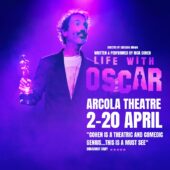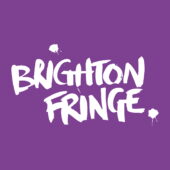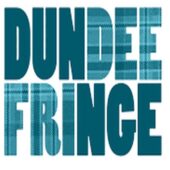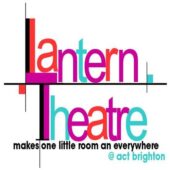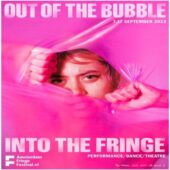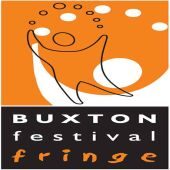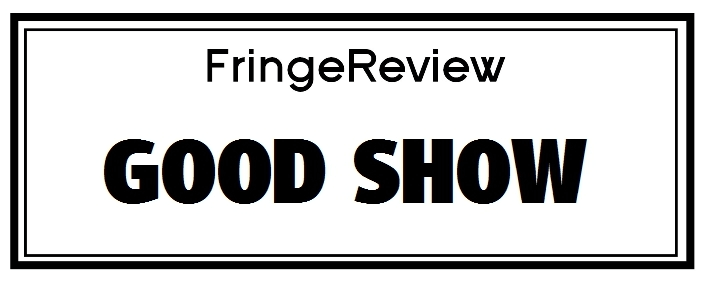Edinburgh Fringe 2018
Low Down
Geek is a new musical created by composer and lyricist George Griggs and director Paul Andrew Perez. This is Infinity Repertory Theatre’s sixth visit to the Fringe. The company is based in Boston, USA and is run by young people.
Review
Geek tells the story of Gibby, a young girl with acne. Her religious parents, believing this to be a judgement from God, make their displeasure clear to her and seek a cure. Unfortunately, the medical treatment makes things worse. Gibby’s father then shoots and kills her incompetent doctor and is sent to prison. Her school friends make fun of her and her mother is so embarrassed that she makes Gibby wear a paper bag over her head. A boy takes an interest and, when Gibby blushes, he sees that her face is beautiful.
Her happiness is short lived, however, as he is then sent to Africa to become a missionary. Gibby’s mother, after singing her a poignant lullaby, then sells her to a circus where she becomes the star “freak” and is happy for a while. When Gibby’s father leaves prison he seeks her out, shoots at her (killing the circus owner in the process), then kills himself. The circus then has to disband. By this time her mother has also died, and Gibby ends up in hospital. The boy she was interested in returns as a nurse, as the missionary work didn’t suit, but he is no longer interested in her. In a rousing finale Gibby dies and she is welcomed into the arms of her parents and is happy at last. All of this in 60 minutes!
Given the description above, this show has all the makings for a highly entertaining original comedy, parodying the usual tales of an excluded misfit – the sort where they ultimately recognise that beauty is about accepting themselves as they are, rather than conforming to a norm, and then go on to lead a happy fulfilling life. However, it isn’t entirely clear if parody is what the show is trying to achieve, or whether the performance is actually taking the story seriously. The flyer describes the show in a much more serious tone as being “a darkly comic musical about love, loss, persecution and redemption … the story of a young woman’s struggle to find love and redemption against the odds” and director Paul Perez writes ‘Gibby’s situation seems surreal, but George and our young cast capture some chilling truths about the world we live in. Despite being a victim, she is blamed for her misfortune and persecuted for being different. Like most people Gibby wants love and acceptance, but she is constantly disappointed.”
The show would benefit from being clearer to the audience about whether this is a tongue in cheek parody, or whether it is trying to convey a serious message. I came to the conclusion that it was the former, and it certainly seems to have much more original comedic potential as a parody. Although the promotional materials don’t make it clear, the serious message really doesn’t seem feasible (given the implausible plot description above) – as it would promote and reinforce a view that Gibby’s only path to happiness is to either look the same as everybody else, or to die!
The young cast of four (all aged 17 or 18) were expertly accompanied by a more mature pianist and guitarist, with the cast at times providing additional percussion. The original score, by composer and lyricist George Griggs, is mainly one of upbeat songs, many sung in unison, though including a range of solos, an occasional duet and a particularly lyrical lullaby. There is a naturally flowing, consistent style to the music.
Three of the cast played multiple characters, aided by very obvious costumes and props that reinforced the comedic element – such as an eye patch, ring master’s hat, doctor’s white coat, toy gun and varying accents. The young actors seemed word perfect and enthusiastically attempted to convey the different characters and emotions required.
The show had a good pace, flowing consistently from scene to scene and from song to dialogue. Some of the transitions from dialogue to song, particularly when moving to a high volume solo, may have benefitted from a slightly longer musical introduction to enable this to be smoother.
The audience would have been helped by having a clearer indication that scenes were changing, and a clearer indication of the setting for new scenes. The vast majority of the show was delivered with between 2 to 4 actors standing across the stage in a straight line, or with one actor centre stage, and with minimal props. Greater use of stage positions and lighting changes might help to create the awareness of scene changes in the eyes of the audience.
Vocally all the singers were very strong and the 4 large microphone boom stands set across the front of the stage did not seem necessary in a venue of this size. They unfortunately created a significant, permanent visible barrier between the audience and the actors. Removing the microphones would enable a far greater use of the stage for creating scenes and evoking emotion. For example – in one scene Gibby’s mother is sitting next to her, consoling her. The mother then has to jump up and walk to a microphone to transition into singing a lullaby to her. The poignant lullaby, which included the lyric “let me rock you in my arms” could be far more powerful with the two sitting together, arm in arm, enabling the emotion to be portrayed.
The use of hand held percussion instruments (and occasional bells round ankles) was particularly effective at the start of the show. However, the show may benefit from giving more consideration to limiting this to music where the added dimension benefits, rather than distracts.
Spoken diction was clear throughout and was generally clear when singing in the initial stages. The show would benefit from maintaining the same high standard of diction throughout the whole performance. There were some challenges with the higher notes at times but generally the pitching was good. Many of the songs were sung in unison and greater use of harmonies may add more colour and depth to the music. The song lyrics comprised mainly of one or two syllable words. Again, it wasn’t initially clear if they were trying to be taken seriously or were cleverly adding to the comedic/parody effect. I hope it was the latter as some that made me smile were: “Faceful of zits, you are the pits”; “Faceful of hope, where is the soap?”; “My head hurts like the next world war, and that’s not funny anymore”
The scripted over the top caricatures generally provided opportunities for clear characterisation. However, the mother/daughter relationship may benefit from greater consideration as it seemed a little inconsistent – and may leave the audience confused. This was the only relationship in the show that portrayed a real emotional bond, yet the loving dynamic/beautiful lullaby and genuine bond didn’t accord with Gibby’s mother making her wear a paper bag at home, or with selling her to the circus. Ironing out that particular inconsistency would not seem to impact on the parody and may improve the plot cohesion. A couple of elements of the script, played for laughs (and receiving some), on the boyfriend’s return from Africa, felt both inappropriate and unnecessary and the script could be enhanced by relooking at these areas.
There seems some potential to improve the way in which the costuming and props are used to enhance the overall performance. For a significant portion of the show Gibby was wearing a paper bag over her head. While this had some initial comedic value it obviously impacted on the emotion and reaction we could see her display. For example, in the scene where a preacher is trying to rid her of evil spirits with snakes, her looks of incredulity would help convey to the audience that we are supposed to find this situation ridiculous.
Some consistency over costuming may also be beneficial. Some costumes were minimalistic whereas others were far more elaborate. A little more attention to detail might also give the show greater polish – such as the hand held protest banners, which were very flimsy and seemed to have just been written on paper with a thin pen. On another occasion Gibby is cleaning in the circus and mimes sweeping with a brush. This seemed to be the only occasion where a prop was mimed. The performance may have had more consistency if either a prop had been used here, or if mime had been used elsewhere.
The use of multiroles worked well in the main, though a scene in which the same actor played a both Gibby’s mother (wearing an eye patch) and the doctor (wearing a white coat) having a conversation seemed unnecessary. The potential benefit of achieving a comedic effect as the actor kept changing positions and costumes was probably less effective than just letting one of the other two actors play the role of the doctor and letting the comedy emerge from the script.
Choreography was used very little in this production, yet it is likely that with this young cast there are many opportunities and upbeat songs where this could be developed. The limiting factor may have been because of the decision that all songs would be sung in a straight line in front of microphones. More movement would have provided an additional layer to the show, enabling greater opportunities for communicating the story and developing the comedy. Because of the proximity to microphones the movement of the cast was limited to stepping side to side, tilting microphones, clapping and waving hands. This movement, limited though it was, would benefit from much greater precision to provide a more uniform visual effect to the audience.
The space was a good size for this production, though the stage itself would benefit from being far tidier, enabling an easier connection and greater focus for the audience. The four actors each had a box of props/costumes on stage for character and scene changes, though props and costumes were also untidily dispersed either around the box on the floor, hanging on the stage surround or lying on chairs. Large bottles of water were also prominently displayed at times, and there seemed no reason why the musician’s rucksack could not have been off stage. Improving the tidiness of the performance space would help the audience to concentrate on the action and connect with the scenes more easily. The flow of the show could also be improved, and audience distraction reduced, by trying to minimise (or at least time appropriately) the movement from characters when “off-stage” (i.e. standing in the corners), including having drinks, getting props out and changing costumes. At times it wasn’t entirely clear whether the actors in the downstage corners were in particular scenes or not.
The costume changes could benefit from being much slicker and timed in such a way as to not distract the audience from the action taking place. There was an added challenge for the character who intermittently wore bells around his ankles as, when changing in and out of this costume there was inevitably the risk of some sound distraction. It may be beneficial to consider how much benefit the ankle bells bring to the show, given this situation.
The presence of live musical accompaniment, rather than backing tracks, enhanced the performance – especially as it was so expertly played. However, on the night I watched the show there was obviously an unexpected source of amusement to the musicians at one point and their extended giggling was another distraction for the audience to contend with. Hopefully this was the exception rather than the norm.
The show was not what I was expecting at all. I thought this was going to be a more serious piece, full of emotion around the typical story of peer pressure, rejection, then self-realisation, finding inner strength and recognition of the absurdity of conformity. It took a while to work out whether the show was supposed to be funny or was trying to be serious. I had the impression that other audience members had the same difficulty, with laughter gradually increasing as the show progressed.
This has the potential to be a very enjoyable and funny show, particularly with the addition of an obvious, early indication to the audience about the comedic nature of the work, clearer scene setting, more effective use of lighting, greater variety in the use of the space, removal of the barriers presented by the microphones, more movement, a clearly defined performance area and less “off-stage” distraction.
Ultimately, at this performance, the up-beat original musical score, skilled accompaniment and enthusiastic young cast resulted in the audience leaving with a smile on their faces.
